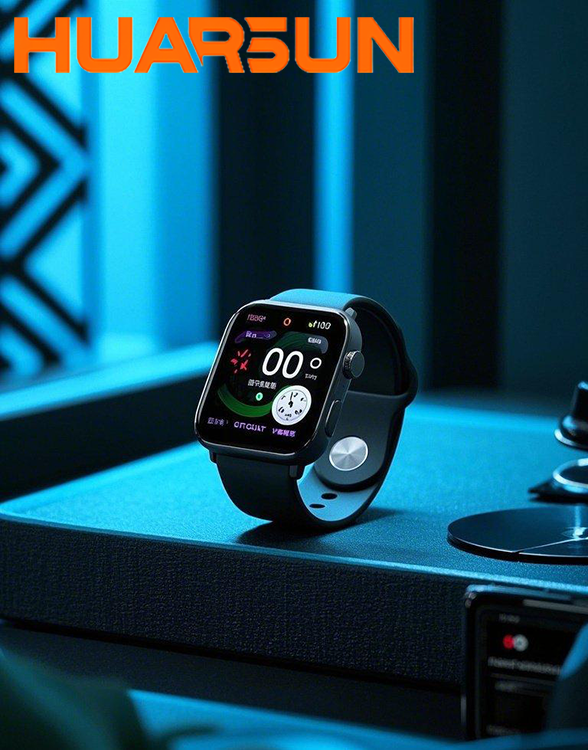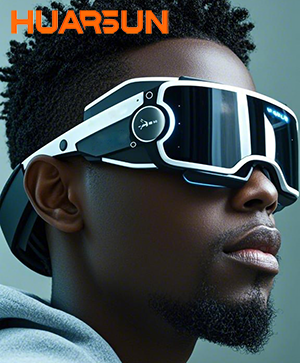Introduction: The Rise of AMOLED in Wearables
The wearable electronics market has grown exponentially, driven by advancements in technology, shifting consumer demands, and the rise of IoT (Internet of Things) applications. A key player in this evolution is the AMOLED (Active Matrix Organic Light Emitting Diode) display, renowned for its vibrant color reproduction, energy efficiency, and superior contrast. This blog explores the benefits of AMOLED displays, particularly in wearable devices like smartwatches and fitness trackers, while examining the broader wearable market trends.
Why AMOLED Displays? Key Advantages in Wearables
-
High Resolution & Brightness The AMOLED display, like the 1.43" AMOLED module, offers a sharp 466x466 resolution and a typical brightness of 720cd/m². This high resolution ensures that even small wearables can deliver crisp, vibrant visuals, essential for user-friendly interfaces in smart devices.
-
Wide Color Gamut With 100% NTSC color reproduction, AMOLED screens offer incredibly vibrant and accurate color displays. This feature is particularly beneficial for wearables, where aesthetics and clarity are crucial for engaging users.
-
Superior Contrast & Viewing Angles AMOLED displays boast an impressive contrast ratio of 10,000:1 and wide viewing angles. Users can enjoy vivid, sharp images regardless of their viewing position, which is particularly important for wearable devices that are often viewed at various angles.
-
Durable & Reliable for Wearables Wearables are often subjected to varying environmental conditions. AMOLED displays are designed to operate within a temperature range of -20°C to 70°C, making them highly versatile and reliable for both indoor and outdoor use. This robustness is essential for devices that cater to fitness enthusiasts and outdoor adventurers.
-
Seamless Integration with Devices With features like QSPI interfaces, AMOLED displays are easy to integrate into smart designs. They offer compatibility with a variety of microcontrollers and IoT devices, ensuring versatility across applications.
-
Power Efficiency Power consumption is a critical concern in wearable devices. AMOLED displays, powered by efficient ICs like the BV6802W, are designed for low energy use, extending the battery life of portable, battery-powered devices such as smartwatches.
Market Trends and Growth in Wearables
As the wearable industry grows, the integration of AMOLED technology is becoming increasingly common in high-end devices. According to recent market research, the wearable device market is projected to see significant growth, with shipments expected to exceed 533 million units by 2024, marking a 20% year-on-year increase. Leading companies like Apple, Xiaomi, Samsung, and Huawei are at the forefront, adopting AMOLED displays in their wearables.
-
Wearable Growth Drivers: Advancements in cloud computing, big data, and wireless sensors are driving the adoption of wearable devices. These technologies enable more efficient data processing, crucial for the functionalities of smart wearables.
-
Consumer Preferences: The shift towards personalized healthcare and fitness tracking, especially post-pandemic, has further accelerated the demand for wearables. AMOLED screens offer a premium experience, making them highly desirable in this space.

Investment Opportunities in the AMOLED and Wearable Market
With the growing demand for high-performance displays in wearables, there are significant investment opportunities in AMOLED technology and related components. Companies in the AMOLED display manufacturing space are well-positioned to capitalize on this trend. As the cost of production decreases and technology improves, the adoption of AMOLED displays is expected to expand across a range of consumer electronics, not just wearables.
Challenges and Future Prospects
While the AMOLED market is poised for growth, challenges remain in terms of production costs and competition with other display technologies like OLED and LCD. However, as the technology matures and economies of scale are realized, AMOLED displays are expected to dominate high-end wearable devices and other smart electronics, providing a richer user experience with greater energy efficiency.
Conclusion
AMOLED displays are set to play a central role in the evolution of wearable technology. With superior display quality, energy efficiency, and robust performance under various conditions, they offer clear advantages for smart devices. As the wearable market expands, AMOLED technology is likely to be at the heart of the next wave of innovation, creating new opportunities for manufacturers, designers, and investors alike.









 Home
Home HEM LCD
HEM LCD  Mar 25,2025
Mar 25,2025 


 Are Advanced Small-Size AMOLED & TFT Displays Shaping the Future of Smart Devices?
Are Advanced Small-Size AMOLED & TFT Displays Shaping the Future of Smart Devices? 
 Mar 21,2025
Mar 21,2025 




